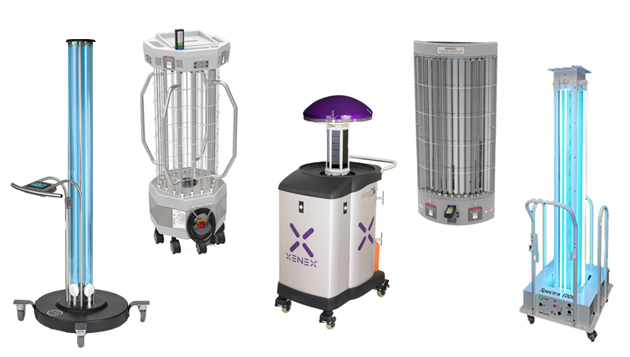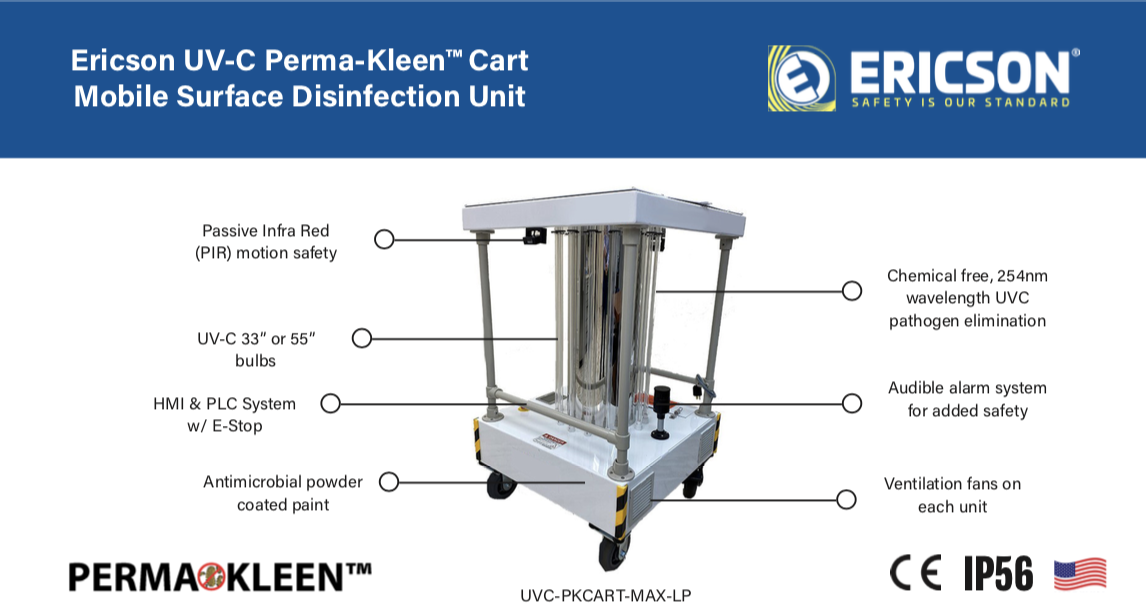Changing Cleanliness Specifications: The Duty of UV Surface Disinfection in Health And Wellness
Changing Cleanliness Specifications: The Duty of UV Surface Disinfection in Health And Wellness
Blog Article
Revealing the Conveniences of UV Disinfection: Ensuring Tidy and Sanitized Areas
In the age of heightened understanding bordering health and sanitation, the significance of reliable disinfection techniques can not be overstated. While standard cleaning approaches have long been trusted, advancements in innovation have actually introduced an ingenious option that makes sure tidy and sanitized rooms: UV disinfection. By taking advantage of the power of ultraviolet light, this method has gotten acknowledgment for its capacity to eliminate dangerous pathogens and offer a detailed sanitization process. Nevertheless, the advantages of UV disinfection prolong much past its efficiency. This discussion will discover the scientific research behind UV disinfection, its effectiveness on different microorganisms, its applications in various setups, and the benefits it holds over traditional methods. Furthermore, we will dig right into the safety considerations that should be taken right into account when executing UV sanitation. Prepare to uncover a new dimension of tidiness and discover the untapped potential of UV disinfection.

The Scientific Research Behind UV Disinfection
UV disinfection is a medically tried and tested method that makes use of ultraviolet light to eliminate dangerous microbes from surfaces and water. The science behind UV disinfection exists in the capability of UV-C light to damage the DNA and RNA of microorganisms, providing them unable to replicate and creating their ultimate fatality. UV-C light drops within the wavelength series of 200 to 280 nanometers, which is highly effective in ruining microorganisms, infections, and various other pathogens.
When exposed to UV-C light, the genetic material of bacteria soaks up the power from the light, resulting in the formation of thymine dimers. These dimers interrupt the typical replication and transcription processes of the microbes, hindering their ability to recreate and survive (uv surface disinfection). The DNA and RNA damage caused by UV-C light is deadly to the bacteria, making UV disinfection a trusted and reliable approach for eliminating a vast array of pathogens
UV sanitation is specifically beneficial in environments where conventional chemical disinfectants may be inadequate or unwise. It is a non-chemical technique that does not leave any type of residues or hazardous by-products, making it secure for usage in food processing, health care centers, water therapy plants, and numerous other markets. UV sanitation is ecologically pleasant, as it does not add to the development of antibiotic-resistant microorganisms or other hazardous pollutants.
Performance of UV Sanitation on Pathogens
The performance of UV sanitation in removing pathogens has actually been extensively researched and verified in numerous clinical studies. UV radiation has the capacity to suspend a vast array of bacteria, consisting of bacteria, infections, and fungi, by harming their DNA or RNA. This prevents them from duplicating and creating infections.
One study released in the American Journal of Infection Control found that UV disinfection worked in minimizing the visibility of multiple drug-resistant germs in medical facility areas. An additional research study performed by the National Institute for Occupational Safety and Health and wellness showed that UV sanitation was able to eliminate 99.9% of the flu infection on surfaces.
UV disinfection has additionally revealed promise in combating the spread of healthcare-associated infections (HAIs) According to a research study released in The Lancet, the usage of UV-C light along with conventional cleansing methods considerably minimized the occurrence of HAIs in a healthcare facility setup.
In addition, UV disinfection has shown to be efficient versus arising virus, such as the extreme intense respiratory system disorder coronavirus 2 (SARS-CoV-2), which causes COVID-19. A study carried out by the National Emerging Contagious Illness Laboratories demonstrated that UV-C light can inactivate the virus on surfaces within seconds.
Applications of UV Disinfection in Different Settings
With its proven effectiveness in eliminating microorganisms, UV sanitation has located applications in a selection of setups. Among the most usual locations where UV disinfection is used is in healthcare facilities. UV innovation is utilized to sanitize client rooms, running areas, and various other high-touch surface areas, decreasing the risk of healthcare-associated infections. On top of that, UV sanitation is additionally being carried out in food handling plants and dining establishments to make sure the safety of food and protect against the spread of foodborne ailments. UV sanitation is likewise useful in water therapy plants, where it is utilized to eliminate hazardous microbes and give secure drinking water.
Another important application of UV disinfection is in the air purification sector. UV air purifiers are made use of in domestic, business, and industrial setups to eliminate air-borne bacteria, viruses, and mold and mildew spores. This innovation is particularly beneficial in environments where individuals are extra vulnerable to respiratory system infections, such as health centers, institutions, and office complex.
Additionally, UV disinfection is progressively being made use of in public transportation systems, such as trains and buses, to maintain clean and sterilized rooms for passengers. UV light is employed to sanitize surface areas and air inside the cars, lowering the threat of spreading contagious illness.
Benefits of UV Disinfection Over Traditional Approaches
In comparison to typical methods, UV disinfection provides a variety of unique advantages that make it a better option in different markets and setups. One considerable advantage is its efficiency versus a large range of bacteria, including viruses, bacteria, and fungi. Unlike chemical anti-bacterials that might have limited effectiveness versus certain pathogens, UV disinfection is a non-selective process that can kill or inactivate a broad spectrum of hazardous organisms.
One more advantage of UV sanitation is its ability to offer effective and fast disinfection. Conventional sanitation techniques often require longer contact times or several steps to attain the preferred level of disinfection. On the other hand, UV light can supply continual and instant sanitation, lowering downtime and raising performance in various applications.
UV sanitation additionally offers a ecologically pleasant and safe alternative to typical disinfection techniques. uv surface disinfection. Unlike chemical agents, UV light does not leave behind any hazardous residues or byproducts, making it ideal for usage in delicate atmospheres such as food processing facilities, healthcare setups, and water therapy plants
In addition, UV sanitation is an economical option in the long run. While the in advance investment for UV disinfection systems may be greater than conventional techniques, the operational costs are typically reduced. UV lights have a lengthy life expectancy and call for marginal maintenance, causing lowered labor and replacement prices.
Safety And Security Factors To Consider for UV Disinfection
Taking into consideration the prospective dangers connected with UV disinfection, it is important to attend to the safety factors to consider associated with executing this technology. UV sanitation uses ultraviolet light to eliminate or inactivate microorganisms, making it an efficient method for sanitizing various surface areas and things. It is important to comprehend that UV radiation can additionally posture risks to human health and wellness if appropriate safety and security steps are not adhered to.
Primarily, direct exposure to UV radiation can cause harm to the skin and eyes. Extended exposure can cause sunburn, skin damages, and also a raised threat of developing skin cancer. For that reason, it is vital to make certain that UV sanitation systems are properly confined and equipped view website with safety features such as automated shut-off devices or activity sensing units to avoid unintentional exposure.

Moreover, proper training and education and learning are vital for those responsible for running UV disinfection systems. They must be aware of the possible risks, comprehend the safety and security procedures, and know exactly how to handle and preserve the equipment properly.
Final Thought
Finally, UV disinfection supplies various advantages in ensuring tidy and disinfected spaces. Its performance in eliminating virus has actually been shown via scientific research study. UV sanitation can be used in different setups, consisting of healthcare facilities, food handling plants, and water therapy systems. Compared to conventional approaches, UV disinfection look at this site has advantages such as faster disinfection times, very little chemical use, and no hazardous by-products. Safety and security factors to consider must be taken into account to stop prospective threats connected with UV exposure.
UV disinfection is a clinically tested approach that makes use of ultraviolet light to remove unsafe microbes from surface areas and water. The DNA find out here now and RNA damages created by UV-C light is dangerous to the microbes, making UV sanitation a reliable and reliable method for eliminating a vast array of virus.
An additional advantage of UV sanitation is its capacity to give effective and rapid disinfection. UV sanitation uses ultraviolet light to kill or inactivate microorganisms, making it an effective approach for disinfecting different surfaces and objects. Contrasted to standard techniques, UV disinfection has benefits such as faster sanitation times, very little chemical usage, and no harmful results.
Report this page